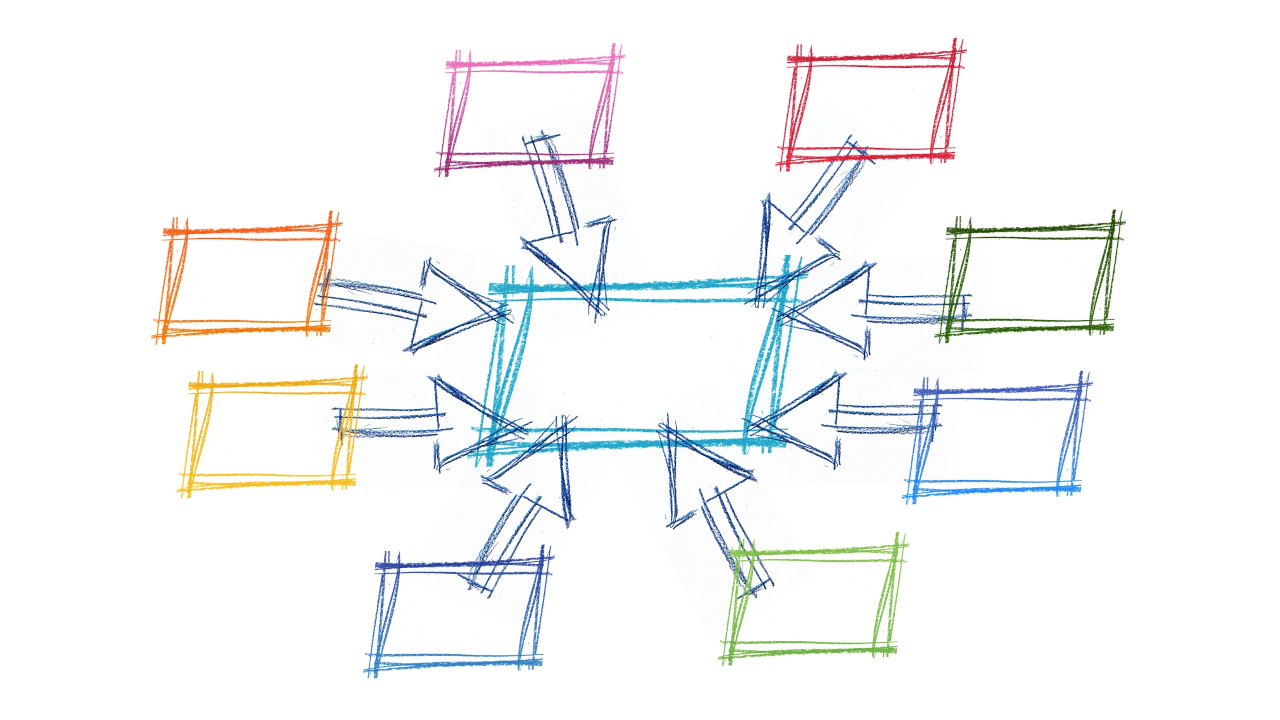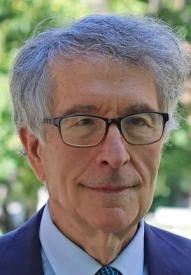
Towards a taxonomy of synthesizing
By Howard Gardner. Originally published on the Integration and Implementation Insights blog.
“Synthesis” seems to be in the atmosphere. The capacity to synthesize, the need for syntheses, and improvement of the quality of syntheses—these are seemingly of interest to many.
A preliminary working definition:
A synthesis is an attempt to bring together various ideas, strands, concepts, and materials. A good synthesis enhances one’s understanding of a question, puzzle, phenomenon (or multiples of these). Familiar examples are school term papers, doctoral dissertations, position papers, landscape analyses, executive summaries, and textbooks. But one can easily extend the list beyond the verbal—to chemical syntheses, equations in physics or mathematics, works of art (poems, paintings, dioramas)—indeed any creation or invention that brings together disparate elements in a satisfying and illuminating way.
Of course, it’s important to avoid the situation where just about everything qualifies as a synthesis. The ambition of the synthesis, its utility, its portability, and its generative potential, are reasonable criteria to keep in mind. Most dinner parties, book reports, limericks, love songs, treaties, and constitutions are not notable syntheses.
How I Think About Synthesis
I have in mind chiefly the kind of scholarly synthesis in which I (and most of my synthesizing colleagues) engage.
- You need a project. In my case, I have worked largely in areas which I am familiar with (eg., history, social science); but I’ve also examined syntheses in areas with which I have much less familiarity (eg., diplomacy, poetry, drama, painting style, financial investment).
- You need a method (or methods). Especially valuable are detailed case studies of attempts at synthesis—which succeeded and why, which failed and why, which achieved partial success, and how they might be improved. Such syntheses ought optimally to be drawn from a variety of fields.
- Taking a critical stance on one’s own efforts to effect a synthesis, you hope to ascertain which of your efforts make sense to you, and which are not convincing.
- Possessing a well-honed critical faculty is an asset, but it’s no substitute for evaluations by “critical friends.” Here, you turn to individuals who wish you well but are not reticent to indicate where you have fallen short, where you have re-invented the wheel, or where you do not make sense.
- Finally, when you have done what you feel you can do, you publish your synthesis.
Here’s my initial attempt to create a taxonomy of the kinds of investigations that are needed and desirable—if we are to enhance our understanding of synthesis. They can be roughly ordered in terms of the disciplines on which one draws; the education and training of synthesis; the use of synthesis; and the future of synthesis.
Taxonomy
The mental processes involved in synthesizing
This is routinely the work of psychologists—for example, those who study the positing and refinement of cognitive schemata—how they are created, revised, connected, communicated. There may also be personality differences that make it more likely that one can be a synthesizer.
The actual media/symbol systems that people use to aid their synthesizing efforts
When I undertake a synthesis, I typically create linguistic taxonomies and move the parts around; Anthea Roberts creates diagrams, visual images, cartoons, and manipulates those graphic entities; many of my colleagues are partial to mind-mapping.
Historical and philological studies of synthesis
Examination of synthesizing by the Greeks (Aristotle, especially); the Bible and other sacred texts; encyclopedias of the 18th and 19th Centuries; libraries, indexes; also philosophers like Hegel (and Kant and the American pragmatists) who sought to explicate synthesis. Valuable contributors here are historians of science—see, for example, Lorraine Daston, Gerald Holton, or Thomas Kuhn. Such scholars identify major shifts in thought—what they entailed, what brought them about, and how they affected future practices.
Studies of master synthesizers or examples of master syntheses
A fine example of this work can be found in the studies of Charles Darwin and of Jean Piaget carried out by psychologist Howard Gruber—historians of science examined other outstanding synthesizers (eg., studies of Robert Woodward, a master organic chemist). Decades ago, I was particularly influenced by the synthesizing capacities of writers Richard Hofstadter and Edmund Wilson.
The educating, training, development of synthesizing ability
This was a chief goal of educational psychologist Benjamin Bloom, who considered synthesis the highest of his “educational objectives.” Regrettably, for reasons I’ve not been able to determine, he dropped this objective. But there are now educational enterprises (eg., London Interdisciplinary School) that target the inculcation of synthesizing ability.
The development of synthesizing capacities in children
Such work depends on the efforts of developmental, cognitive, and educational psychologists. Those most likely to be able to discern the emergence and growth of synthesizing are keen observers of children, such as Alison Gopnik and Frank Keil, legal scholar Scott Hershovitz, or educational psychologist Susan Engel.
The biology and neurology of synthesizing
I have in mind studies of the development (and eventual consolidation) of neural connections—the field currently called connectomics. Computer design-turned neuroscientist Jeff Hawkins has developed relevant models.
Studies of educational or business centers
Looking at settings that seek to cultivate synthesizing capacities (whether or not they use that descriptor): IBM in the 1950s, Xerox PARC in the 1970s, Google’s Deep Mind today. In universities, Cambridge University—particularly physics—in the early 20th Century; Rockefeller University —particularly biology/medicine later in the 20th Century; Santa Fe Institute on complexity theory.
Professional training
The training of political and intelligence figures—Geoff Mulgan is a leader in this endeavor. The study of what people can accomplish alone (Philip Tetlock on super-forecasters), or together, in various kinds of groups (see Scott Page on the need for cognitive diversity in teams); the challenges in proceeding from information to analysis and planning to action; learning from what went well and what went badly (or was terminated, for whatever reason).
Synthesizing by algorithms, deep learning, and other kinds of computational mechanisms
Clearly this is happening every day, much of it already done much better by computers/AI/ Deep Learning/ChatGPT than by humans—but the work is only as valuable as the materials—the models—that have been presented.
In evaluating computer-generated analyses and syntheses, the deep question remains: “Who decides?” Whether the results of an analysis, or a synthesis, a set of recommendations should simply be followed—a very different kind of synthesis or “meta-synthesis” may be needed, entailing perspectives, values, ontologies, world-views, or unintended consequences.
Closing note
What I have set forth here represents some of my current thinking about the fascinating and challenging process of synthesizing—so far by human beings, but recently joined by powerful computational algorithms. More can be followed in my series of blogs, to which I contribute regularly: https://www.howardgardner.com/synthesizing
For now, I am pleased to launch the conversation and hope to keep it going. I am interested in your comments.
To find out more:
This i2Inisghts contribution is a lightly edited extract from Gardner, H. (2023). Towards a taxonomy of synthesizing, Howard’s Blogs on Synthesizing. (Online): https://www.howardgardner.com/synthesizing/kgnox8tsoo9iprz27y2422fkl2vbxi
See also:
Gardner, H. (2020). A synthesizing mind. A memoir from the creator of multiple intelligences theory. MIT Press: Cambridge, Massachusetts, United States of America.
Biography:
 |
Howard Gardner PhD is the John H. and Elisabeth A. Hobbs Research Professor of Cognition and Education at the Harvard Graduate School of Education, Harvard University, Cambridge, Massachusetts, USA. Best known for his theory of multiple intelligences, he has received multiple honors. In addition to the nature of human synthesizing, his current research interests encompass the development of moral and ethical understandings and behaviors, beginning in the early years and extending through higher education and into the professions. |
Article source: Towards a taxonomy of synthesizing. Republished by permission.
Header image: Gerd Altmann on Pixabay.


